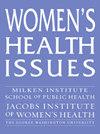生育意向时间范围作为避孕方法有效性的预测因子。
IF 2.5
2区 医学
Q2 PUBLIC, ENVIRONMENTAL & OCCUPATIONAL HEALTH
引用次数: 0
摘要
背景:避孕方法研究和避孕方案设计都更关注女性目前是否想要孩子,而不是她想要孩子的时间。我们研究了女性目前使用的避孕方法的预期持续时间对其(下一次)分娩的预测程度,并根据方法的有效性进行了排名。我们假设,更长的预期持续时间将与选择更有效的方法有关。方法:我们汇集了特拉华州和马里兰州两项具有人口代表性的调查中的妇女观察结果(n = 7324):行为风险因素监测系统和妇女调查。我们将生育意向分为想在2年内要一个孩子,想要一个孩子但不确定是什么时候,想在2年或更长时间内要一个孩子,以及不想要(额外的)孩子。避孕方法分为高效(宫内节育器和植入物)、中等有效(如避孕药)、低效(如避孕套)和无方法。我们使用多项逻辑回归来估计相对风险比,并预测使用每种方法类型的概率,以及不使用方法的概率,并根据社会人口统计学特征进行调整。结果:随着女性生育意向视界的延长,使用高效方法的概率增加,不使用有效方法的概率降低。与有明确的意图相比,不确定生育时间与使用任何避孕方法的可能性都大大降低有关。结论:我们的研究结果强调了避孕咨询和避孕获取方案设计的重要性,考虑生育计划的意图,超越了即将到来的一年。本文章由计算机程序翻译,如有差异,请以英文原文为准。
Birth-Intention Time Horizon as a Predictor of Contraceptive Method Effectiveness
Background
Both contraceptive method research and contraceptive program designs have given more attention to if a woman currently wants to have a child than to when she wants a child. We examine how predictive is a woman's intended duration to a (next) birth for her type of contraceptive method currently used, ranked by the method's effectiveness. We hypothesize that a longer intended duration will be associated with choosing a more effective method.
Methods
We pooled observations of women (n = 7,324 in total) across the two population-representative surveys in Delaware and Maryland: the Behavioral Risk Factor Surveillance System and the Survey of Women. We classified birth-timing intentions into wanting a child in less than 2 years, wanting a child but being uncertain when, wanting a child in 2 or more years, and not wanting (additional) children. Contraceptive method was classified as highly effective (intrauterine devices and implants), moderately effective (e.g., contraceptive pills), less effective (e.g., condoms), and no method. We used multinomial logistic regression to estimate relative risk ratios and predicted probabilities of using each method type, and no method, adjusting for sociodemographic characteristics.
Results
As a woman's birth-timing intention horizon lengthens, her probability of using a highly effective method increases, and her probability of using no method decreases. Being uncertain about birth timing is associated with a substantially lower probability of using any type of contraceptive method relative to having clear intentions.
Conclusions
Our findings underscore the importance for contraceptive counseling and contraceptive access program design of considering birth-timing intentions beyond the year immediately ahead.
求助全文
通过发布文献求助,成功后即可免费获取论文全文。
去求助
来源期刊

Womens Health Issues
Multiple-
CiteScore
4.50
自引率
6.20%
发文量
97
审稿时长
32 days
期刊介绍:
Women"s Health Issues (WHI) is a peer-reviewed, bimonthly, multidisciplinary journal that publishes research and review manuscripts related to women"s health care and policy. As the official journal of the Jacobs Institute of Women"s Health, it is dedicated to improving the health and health care of all women throughout the lifespan and in diverse communities. The journal seeks to inform health services researchers, health care and public health professionals, social scientists, policymakers, and others concerned with women"s health.
 求助内容:
求助内容: 应助结果提醒方式:
应助结果提醒方式:


